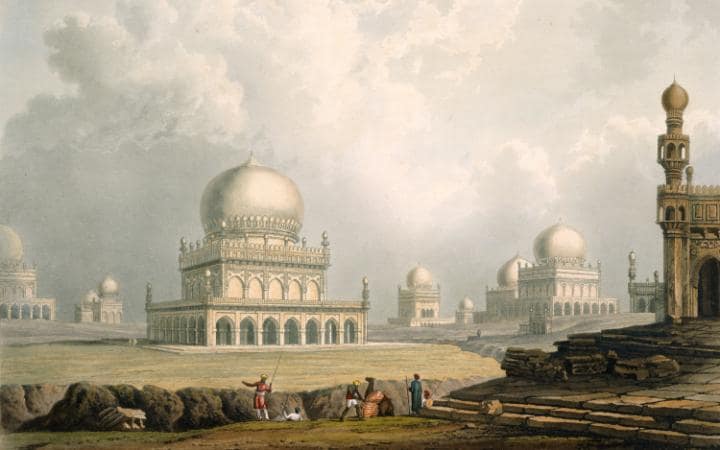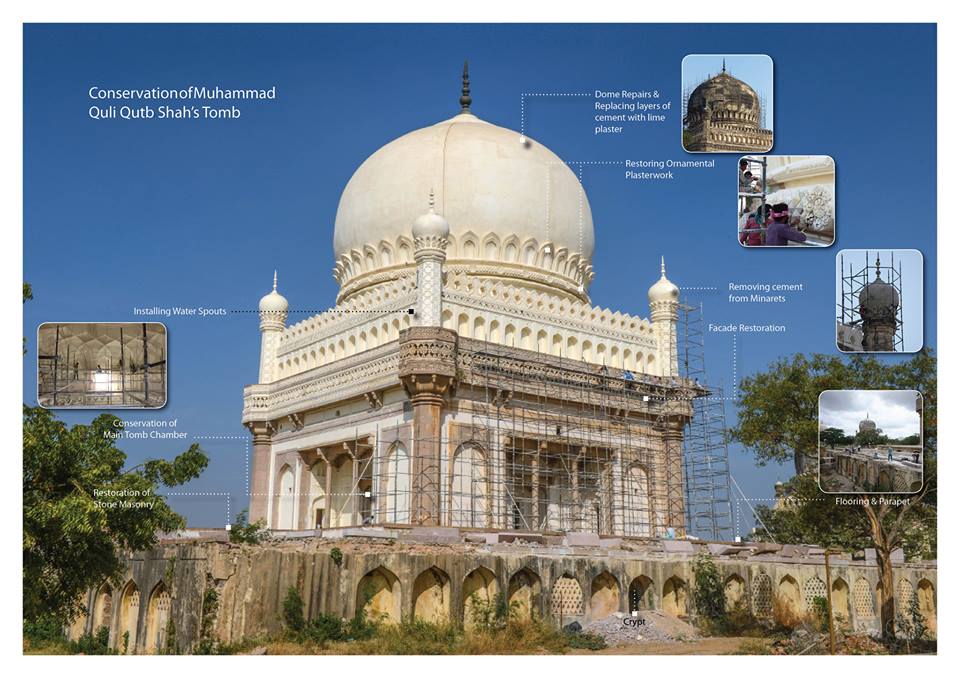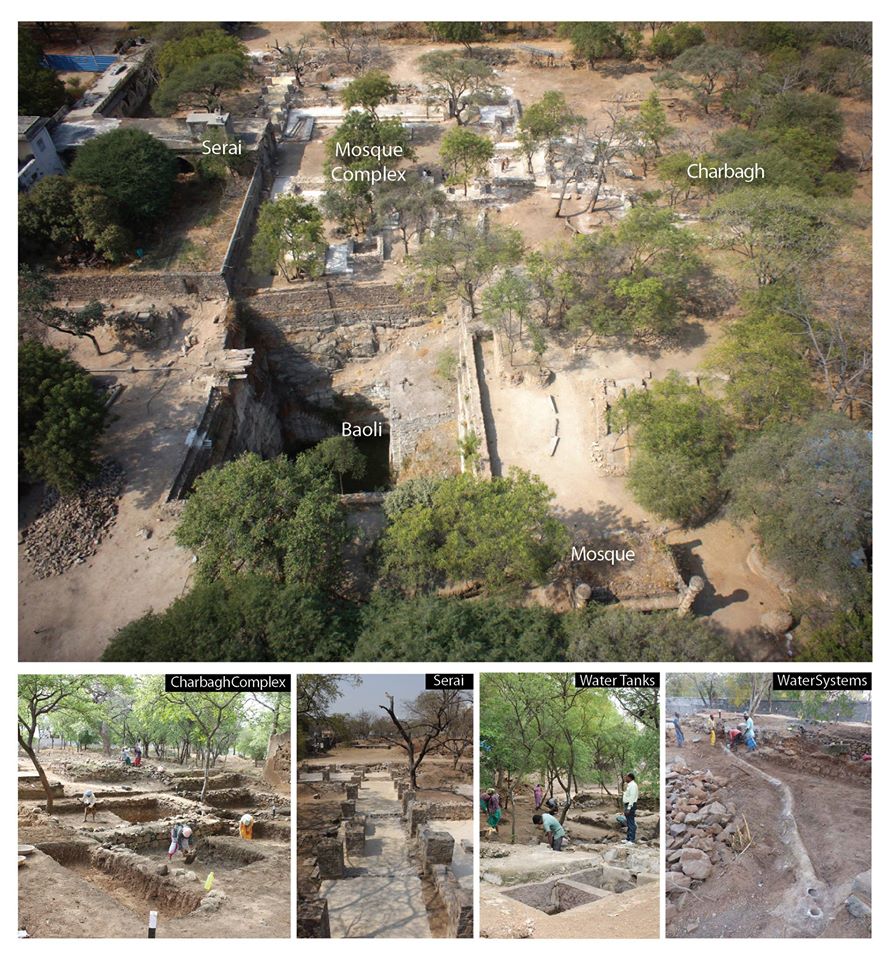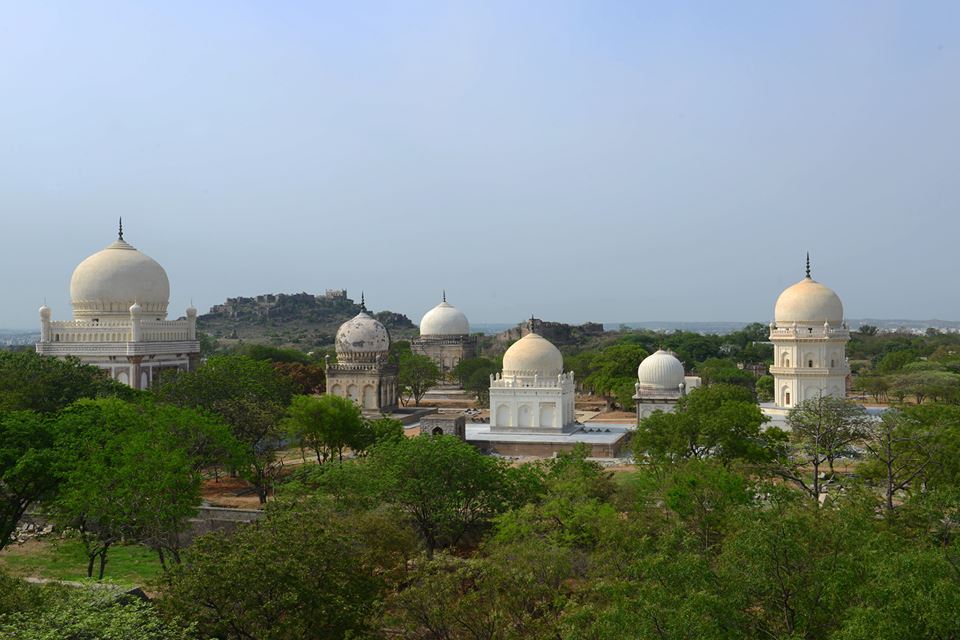Qutb Shahi Tombs - India's spectacular hidden tombs
- The Qutb Shahi Heritage Park feature 75 monuments including 40 mausoleums.
- Muhammad Quli Qutb Shah(1581- 1611), the fourth king of the Qutb Shahi dynasty laid the foundation of Hyderabad. During his reign, the dynasty reached the zenith of its material and cultural life.
- The majestic tomb built in 1602, is one of the largest tombs at the Qutb Shahi Heritage Park reaching to a total height of 60 m.
The site, made of the Qutb Shahi Tombs Complex and Deccan Park, was established by the Qutb Shahi dynasty in the 16th and 17th centuries, and is said to be “one of the most significant historic medieval necropolises in the world”. Alongside numerous mosques and mausoleums, the park also includes six step-wells, a hammam, and pavilions as well as water and garden structures.
Nestled at the foot of the majestic Golconda Fort, the Qutb Shahi Heritage Park is spread over 106 acres. This necropolis of the Qutb Shahi dynasty, that ruled the region for 169 years in the 16th–17th centuries, includes 40 mausoleums, 23 mosques, 6 baolis (step-wells), a hammam (mortuary bath), pavilions and garden structures set within a heritage zone of international significance.
An illustration of the Qutb Shahi park site in 1826

CREDIT: REX FEATURES
The Qutb Shahi Tombs are located in the Ibrahim Bagh, close to the famous Golkonda Fort in Hyderabad, India. They contain the tombs and mosques built by the various kings of the Qutb Shahi dynasty.

The Qutb Shahi Heritage Park is a unique site with no other necropolis, anywhere in the world, matching the grandeur, diversity and completeness – the latter as mausoleums representing the entire reign of the Qutb Shahi’s stand here. Apart from the tombs the site boasts of several mosques, large baolis or step-wells, garden structures and one standing hamam or bath-house.
Muhammad Quli Qutb Shah(1581- 1611)

Muhammad Quli Qutb Shah(1581- 1611), the fourth king of the Qutb Shahi dynasty laid the foundation of Hyderabad. During his reign, the dynasty reached the zenith of its material and cultural life.
The majestic tomb built in 1602, is one of the largest tombs at the Qutb Shahi Heritage Park reaching to a total height of 60 m.
Conservation works included removal of cement plaster, which was a later addition, and restored using lime plaster which was originally used on the dome, wall surfaces and plinth. The present flooring in the upper chamber will be replaced with granite stone blocks/slabs, maintaining the original levels and slopes. Other missing damaged and decorative plasterwork will also be restored.

The area north of Hamaam(mortuary bath) conceals below its surface a number of archaeological remains of various structures.
The excavation of this area exposed three structural complexes, one of which revealed remains of a mosque with attached rooms, fountains and remnants of toilets. The fountains and toilets were supplied with terracotta pipes for the supply of running water.
The second complex has rooms on three sides of the quadrangle with a fountain and what appears to be a small char-bagh – the latter possibly a later alteration suggesting continued use of the area.
A third complex has a number of rooms with water tanks connected with terracotta water pipes and an underground chamber known as Zir-I-Zamin or Taikhana. In the extreme summer seasons, such underground rooms were often used to escape from the sweltering heat.
Many of these rival the greatest Mughal structures in scale and represent almost two centuries of funerary architecture. No other ensemble of structures in the Deccani kingdoms of Ahmednagar, Berar, Bidar, Bijapur or Gulbarga includes as many monuments of striking grandeur and complexity reflecting a unique synthesis of architectural styles.
These were built during the reign of the Qutb Shahi Dynasty who ruled the Hyderabad region for 170 years in the 16th – 17th centuries and many of these rival the greatest Mughal structures in scale and represent almost two centuries of funerary architecture.
Conservation works included removal of cement plaster, which were a later addition, and restored using lime plaster which was originally used on the dome, wall surfaces and plinth. The present flooring in the upper chamber will be replaced with granite stone blocks/slabs, maintaining the original levels and slopes. Other missing damaged and decorative plaster work will also be restored.
Panoramic view of some of the restored

Panoramic view of some of the restored monuments of the Qutb Shahi Heritage Park (From Right to Left) Jamshed Quli Qutb Shah's Tomb, Subhan Quli Qutb Shah's Tomb, Sultan Quli Qutb Shah's Tomb, Ibrahim Quli Qutb Shah's Tomb, Kulsoom Begum's Tomb, and Muhammad Quli Qutb Shah's Tomb
The first phase of the restoration work is expected to be completed by early 2018.


